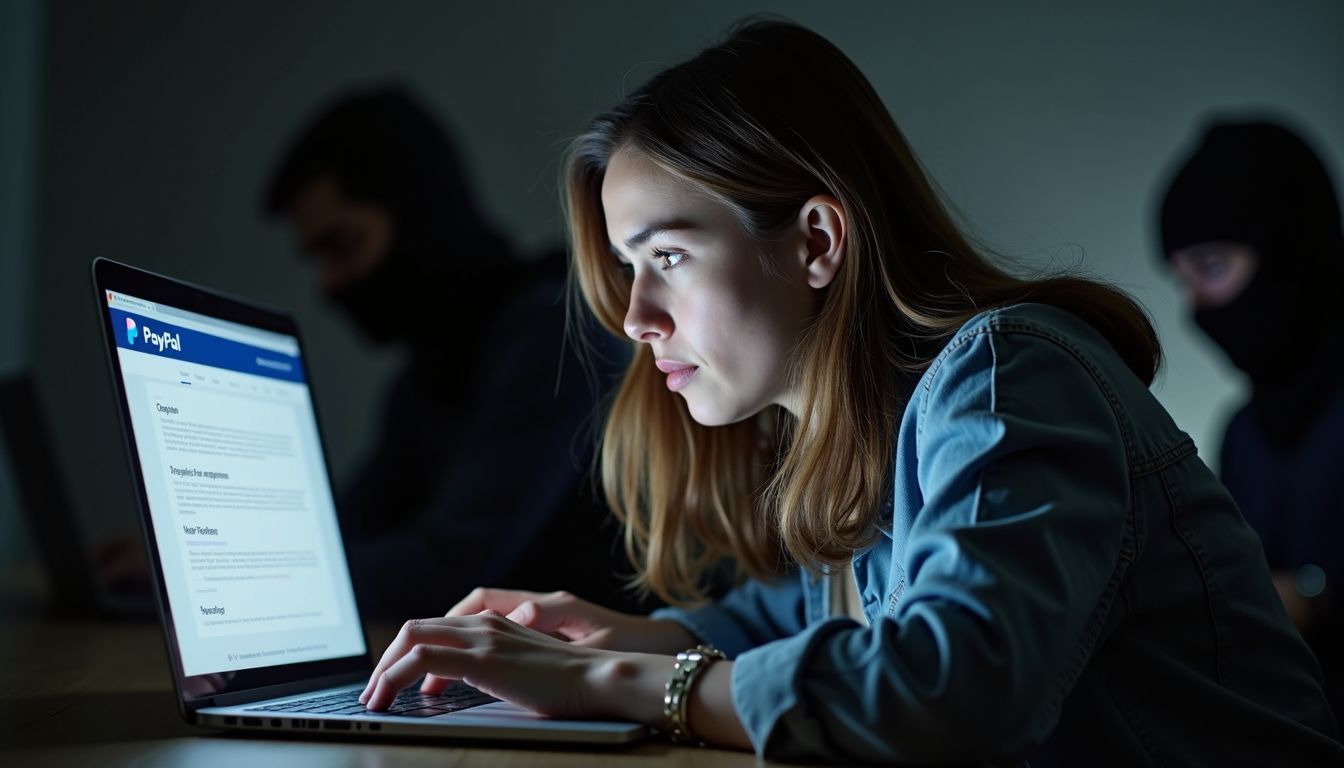Worried about your online safety? PayPal Data Breaches hit thousands in December 2022. This blog explains how to protect your info and what steps to take next. Stay safe—read on.
Key Takeaways
- Hackers broke into PayPal in December 2022, taking personal stuff like emails and Social Security Numbers.
- Stolen info could lead to identity theft or unauthorized bank access. Users should change their passwords and watch their accounts.
- PayPal made its security better by adding extra steps to check who you are. They also teach users how to stay safe online.
Overview of the PayPal Data Breach Incident

The PayPal data breach incident exposed a lot of user info, because hackers found a way in. They got into the system and took things like usernames and bank details.
What data was compromised?
Hackers got into PayPal and took a lot of personal info. They grabbed email addresses, Social Security Numbers (SSNs), where people work, where they live, their job titles, names, phone numbers, and even social media profiles.
This means that hackers have sensitive details like SSNs. People’s private and financial lives were at risk because of this data breach. Cybercriminals could use this info in bad ways, like stealing identities or getting into bank accounts without permission.
How did the breach occur?
Attackers got into PayPal accounts without permission. They used a trick called credential stuffing. In this trick, they took usernames and passwords from other leaks. Many people use the same password everywhere, which made it easy for attackers to get in. Once in, they had access to personal and financial info. This method shows why using different passwords is key to keeping accounts safe.
Impact on Affected Users
When PayPal had a data breach, people’s private and bank info was at risk. They needed to act fast to keep their money and identity safe.
Risks to personal and financial information
Stolen data from a PayPal breach could end up on the dark web. This means someone might use it without you knowing. They can take your identity or spend money from your bank account. Watching your accounts for weird actions is smart. Tell the bank right away if you see something wrong.
For those affected, changing passwords helps. Use strong ones that are hard to guess. Adding two-factor authentication makes it safer to log in. It’s like having two locks on a door instead of one. Keeping personal details safe online is key to avoid theft and fraud.
Immediate steps for affected users
After learning about the risks to personal and financial information, users must act fast. Here are steps you can take right away:
- Change your PayPal account’s password. Make it strong and unlike any other passwords you use.
- Reset passwords for any other accounts where you might have used a similar password.
- Turn on Two-Factor Authentication (2FA) for your PayPal account. Do this for other important accounts too.
- Check if your email has been part of a data breach by visiting the website “Have I Been Pwned.”
- Review recent activities in your PayPal account for anything unusual.
- Watch out for phishing emails trying to trick you into giving away more info.
- Contact PayPal’s support team if you notice unauthorized transactions.
- Keep an eye on your bank statements linked to PayPal for unexpected charges.
- Consider using credit monitoring services to watch for signs of identity theft.
- Secure devices with antivirus protection to block malware from getting through.
By taking these steps, users can better protect their information and reduce the risk of further damage.
PayPal’s Response and Security Measures
After the data breach, PayPal took quick actions to strengthen its defenses. They upgraded their systems and told all users how to stay safe.
Enhancements to security infrastructure
PayPal made its security stronger. They added more steps to check who you are, like two-step verification and passkeys. This makes it harder for hackers to get in. PayPal also uses special software from McAfee+ to protect against identity theft. They keep an eye on new threats and update their defenses.
They improved how they watch for fake websites and phishing attacks. Now, they can find risks faster and stop them before they cause harm. PayPal tells its users how to stay safe online, suggesting things like using a virtual private network (VPN) and picking a strong password. These changes help protect personal data better than before.
Communication to users
Users had to set new passwords. They were told to do this the next time they logged in. This move was to make sure their accounts stayed safe after the breach. PayPal made it clear: safety first.
Change your password now for better security, said PayPal, stressing quick action.
If anyone needed help or felt unsure about their account, PayPal asked them to reach out directly. This way, users could get personal help and answers fast.
Conclusion
The PayPal data breach in December 2022 put 35,000 users at risk. Hackers got into accounts and saw sensitive details like Social Security Numbers and bank info. PayPal acted fast, changing passwords and boosting security.
Users need to change passwords and check their accounts often. This event shows how vital digital safety is today.





